Less than an hour from the heart of Rome are the ruins of an ancient city preserved by nature, much in the same way that the eruption of Mount Vesuvius stopped Pompeii in its tracks. One key difference (other than the drama of a volcanic eruption) is that, unlike the super popular Pompeii, very few tourists ever make their way to Ostia Antica from Rome. If you’ve already hit the highlights of the Eternal City, it’s worth the quick train trip to explore this formerly bustling port town.

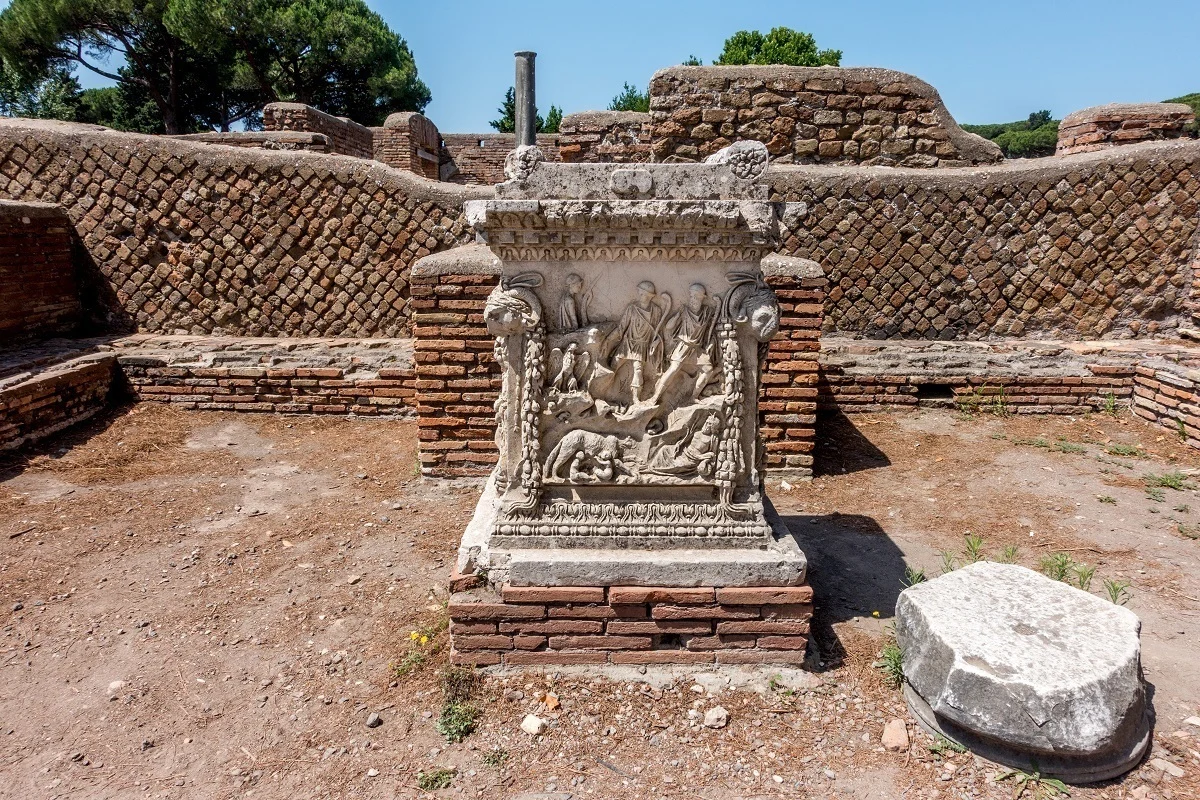
What is Ostia Antica?
Ostia was founded at the mouth of the Tiber River around 620 B.C. It was an important gateway to Rome and thrived on the salt from the nearby salt flats, which was an important preservative in the many centuries before refrigeration. As the population grew to over 100,000 residents, it became a naval base, a seaport, and a busy commercial center. As the city declined, mud and silt from the river took over.
What’s left of today is not only under-rated but mostly unknown by tourists a stone’s throw away in Rome. It took us four visits to Italy for the site to even make it on our radar. And while most tourists to Italy focus on the major landmarks and attractions, this site should be on any traveler’s list.
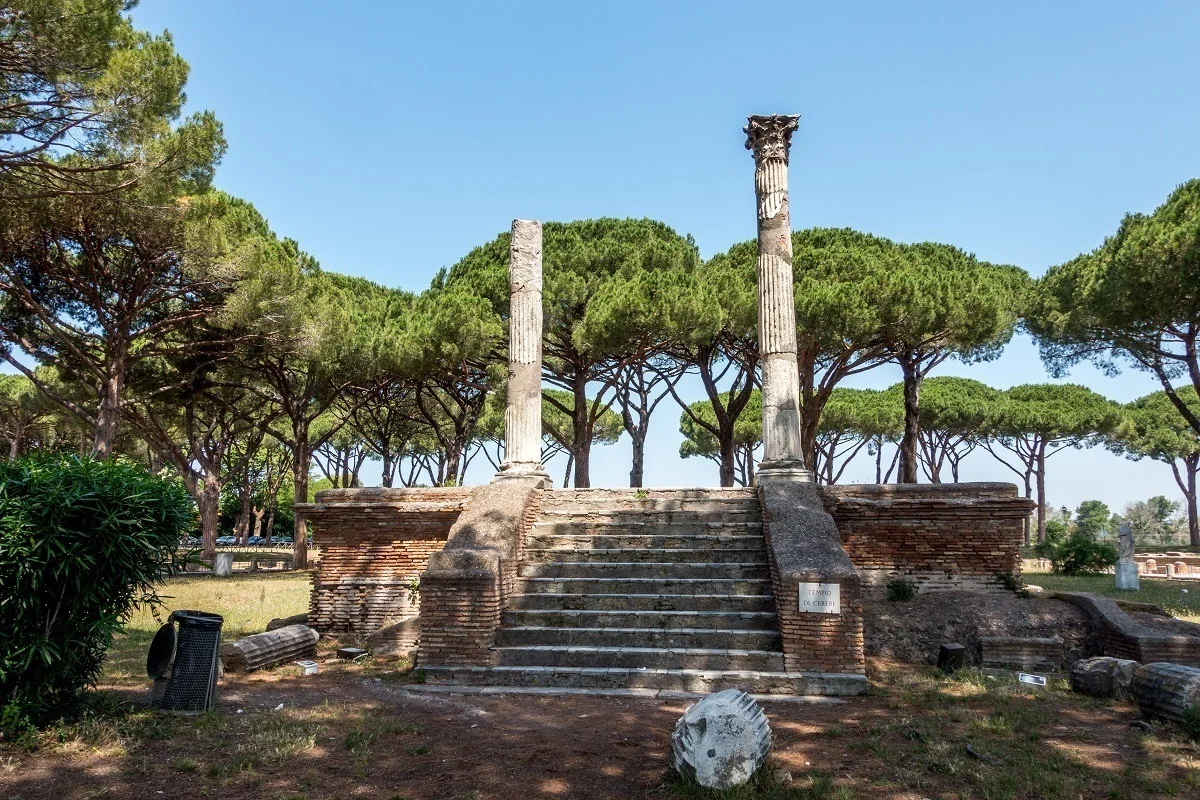
Ostia Antica is laid out along a main street with sprawling complexes on either side. Like other major sites such as Hadrian’s Villa, much of the city is still unexcavated, but there’s plenty visible above ground. Not far from the entrance, the grandeur of Ostia’s past starts to reveal itself. It’s always amazing to see statues that are thousands of years old still mostly intact. Even the ones missing limbs (or heads) can be quite beautiful.
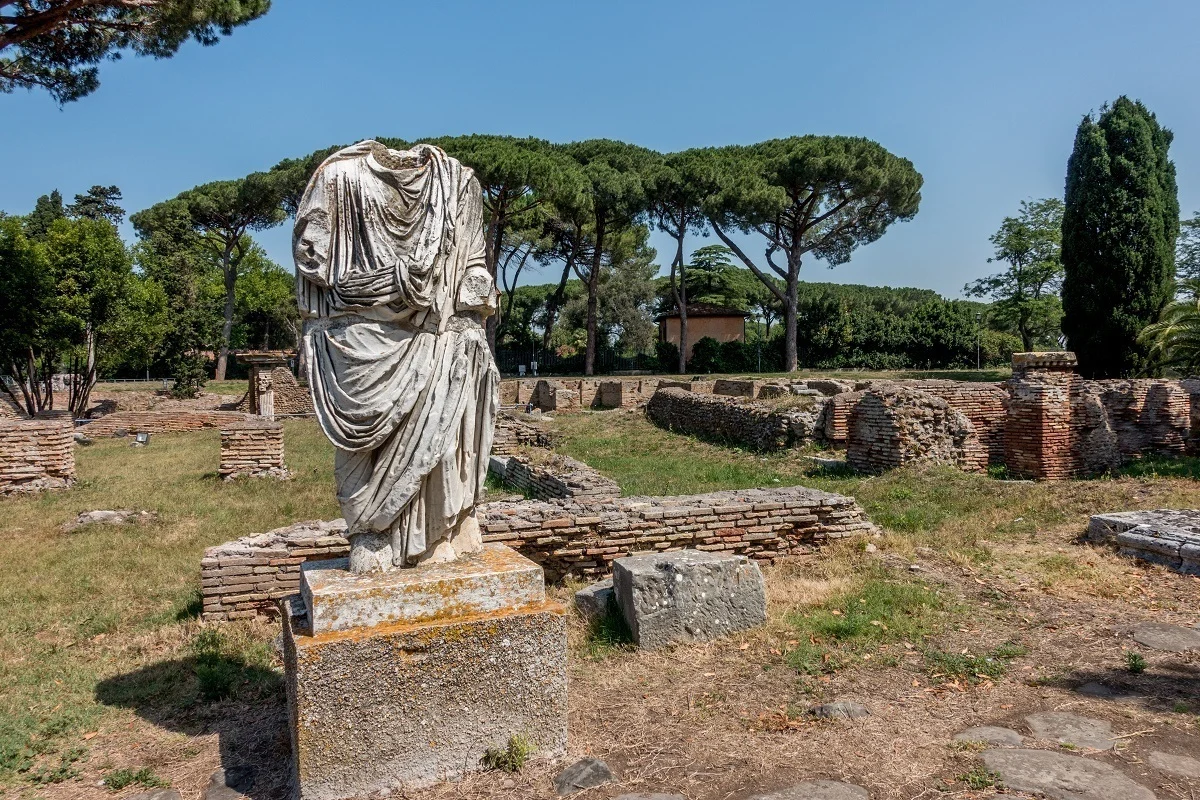
In its day, Ostia was significant enough to have temples, ornate baths, a sizeable theater, and homes of nobles. Somehow, enough of these great structures have survived to still be recognizable today. Unlike ruins in many other ancient cities, in Ostia Antica, you can still see original mosaics and walk in the footsteps of the citizens who lived here. With just a few exceptions, buildings are open and easily accessible to visitors. And you may be mostly alone while you explore.
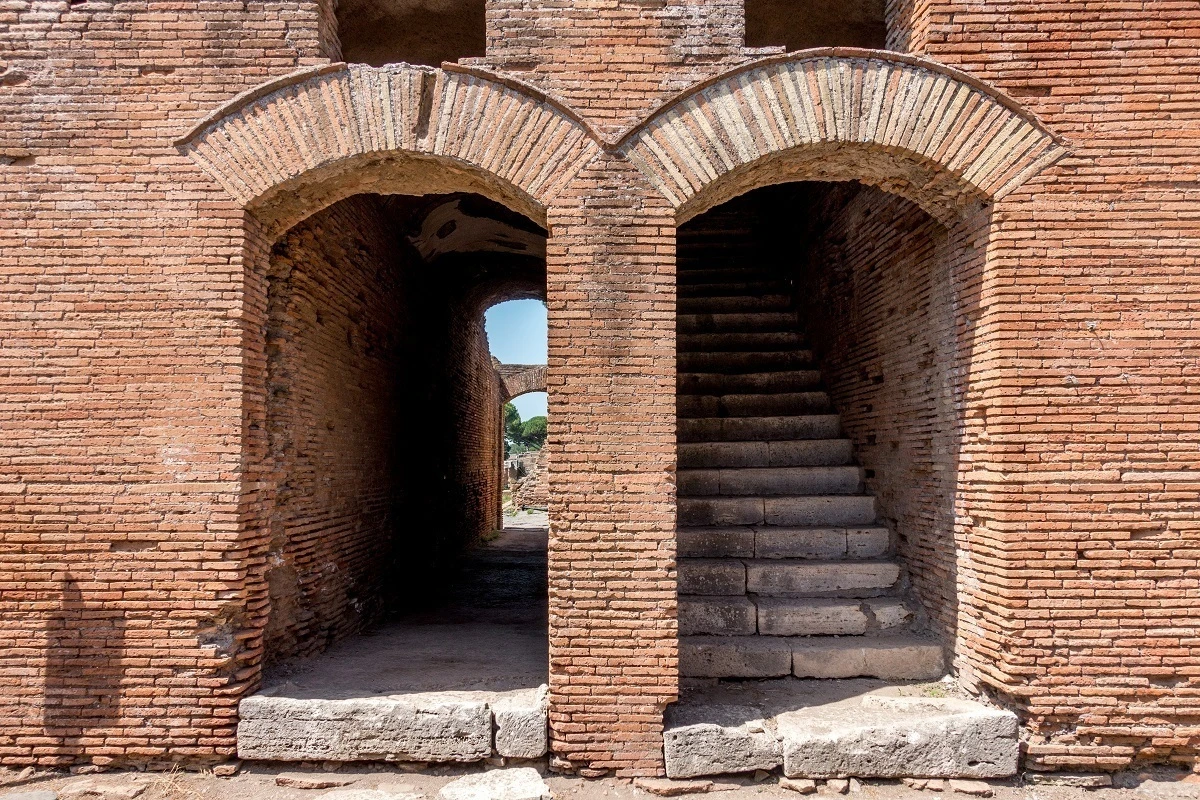
Tour the Historic Site
The first big site to catch our attention was the Baths of Neptune. In Roman times, the baths were one of the social hubs with rooms and tubs of different temperatures and plenty of places to relax for hours.
Though parts of the baths have been lost to time, the intricate mosaic of Neptune on his chariot that graces the floor is one of the most spectacular ruins we’ve seen anywhere in the world. Between its age, its completeness, and the skill used to craft it, everything about this mosaic is astounding.
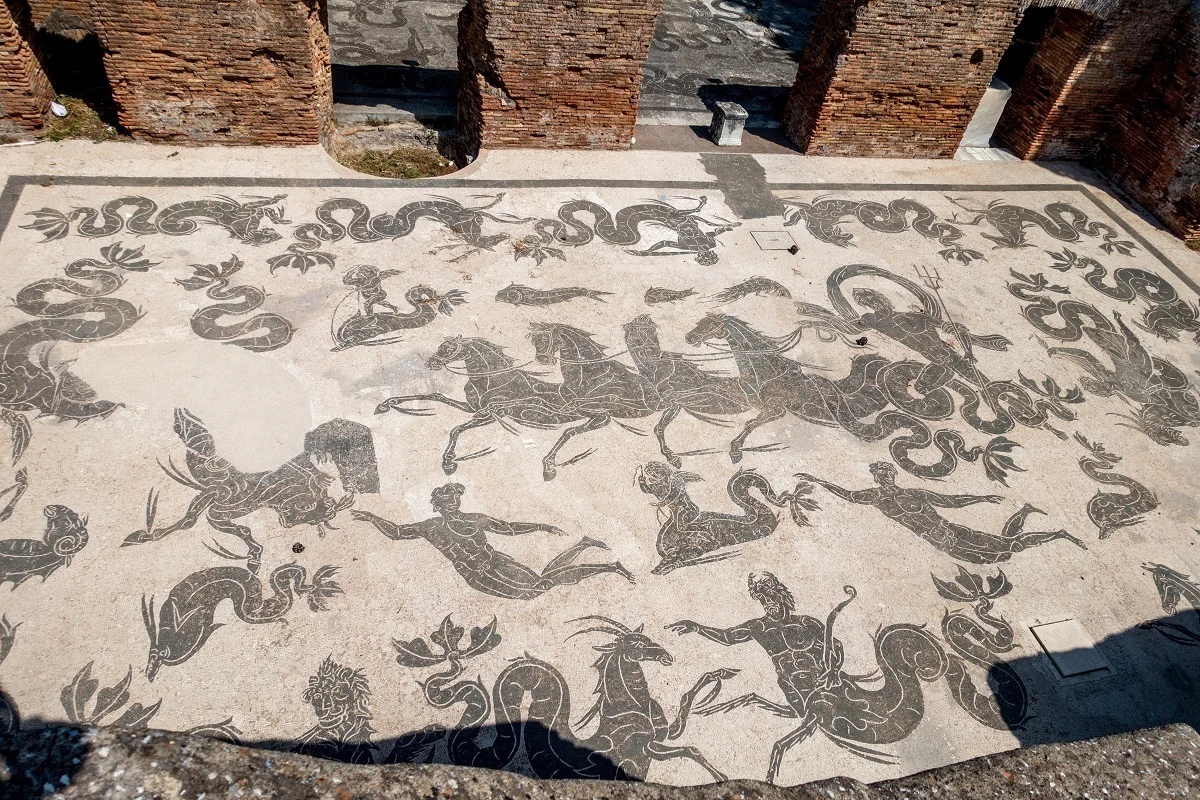
Just a few steps beyond the mosaic is the heart of the complex—its vast theater. One of the oldest theaters of its kind anywhere, the 2700-seat venue still hosts events today. Nearby, the theatrical mask ornaments remind you of where you are.
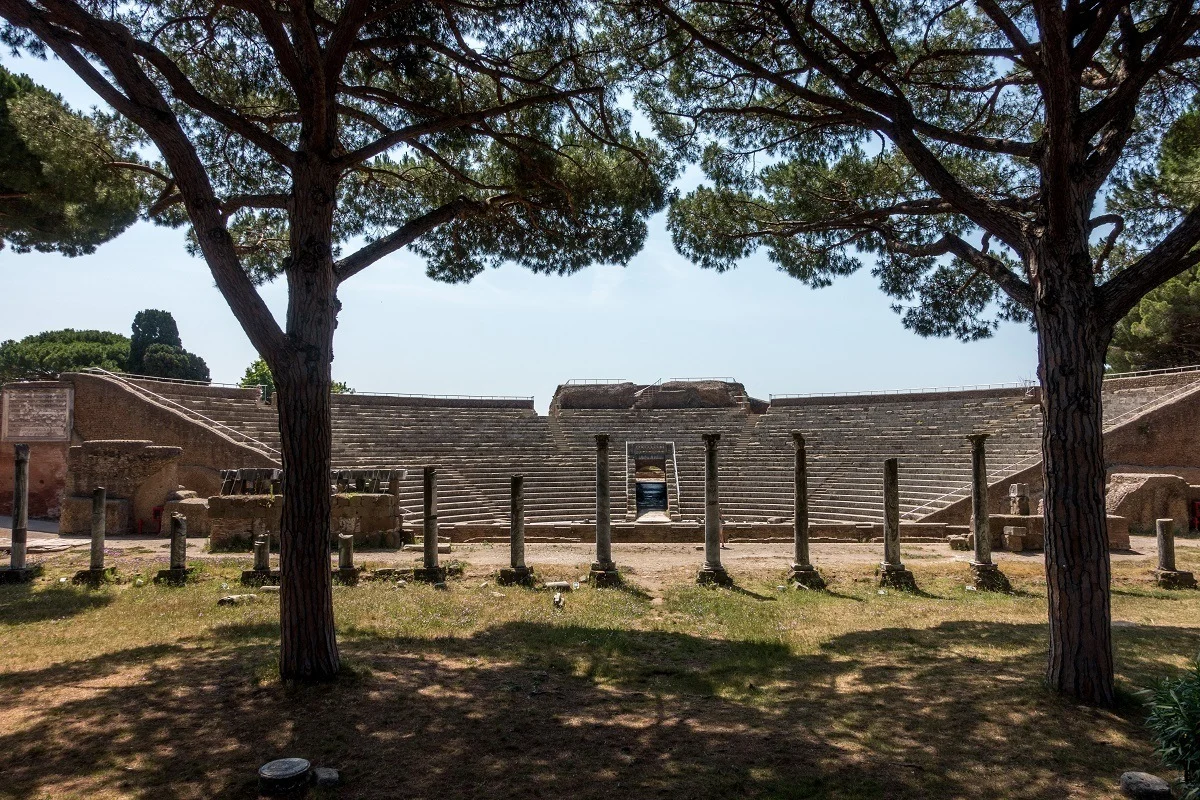
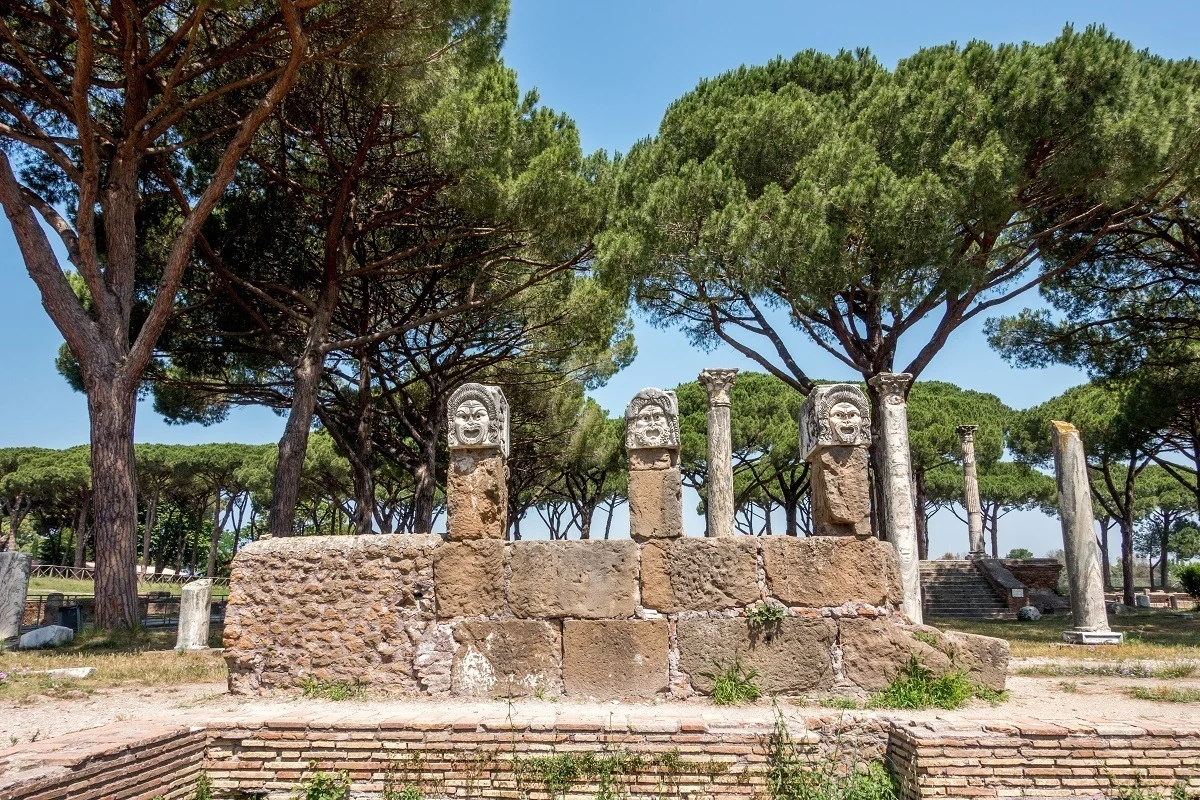
Just in front of the theater is the Plaza of the Guilds, which used to be the heart of Rome’s import/export business. Mosaics along the walkway advertise the services of the more than 60 shops that used to be here.
Elsewhere in the settlement, you can see a tavern and bar complete with an area to display food, ancient apartments where the lower middle-class lived. There are storehouses, the remains of temples, and other ruins of all types dotting the landscape. There are even insule—houses with frescoes that can be visited with an appointment.
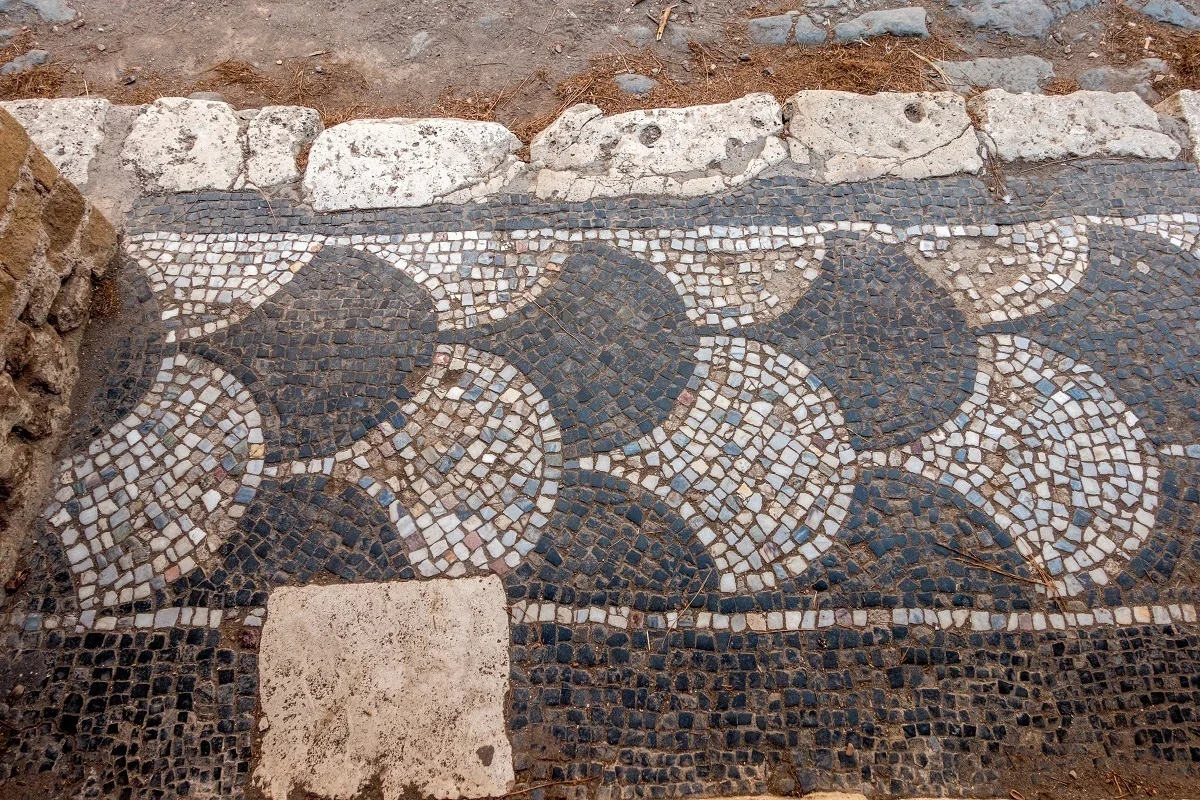
The on-site museum displays some of the best statues excavated from the buried city. There are wrestlers and cupids and reclining goddesses next to busts of actual Ostia residents. Statues of the patriarchs and ancestors dot the pedestals, and there are plentiful examples of carved coffins.
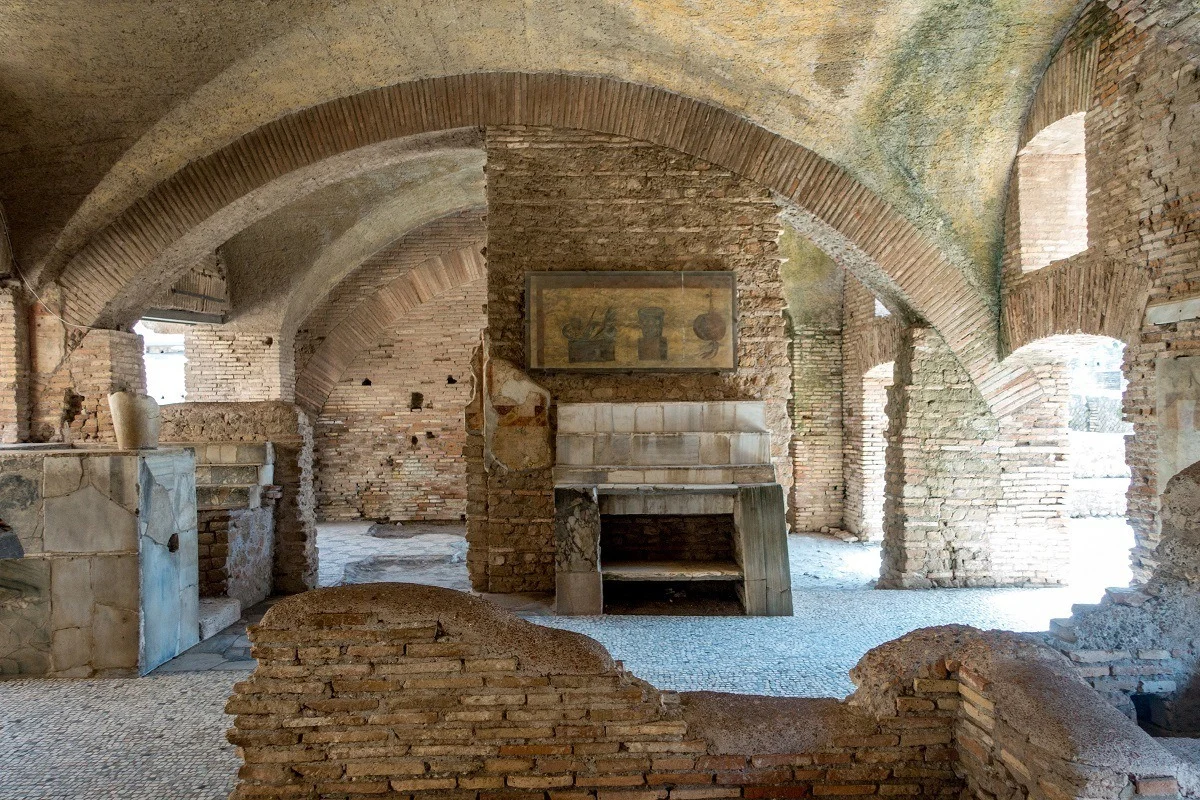
On the whole, there is a lot to see in Ostia, and a visit here is much less controlled than at many other historic sites (it reminds us of Volubilis, the Roman ruins in Morocco). The drawback to that is that there are also stretches of the park that are simply old walls and arches without much explanation of what you’re seeing. If you’re prepared for a bit of walking and to read the many detailed panels that are available, visiting Ostia Antica is definitely worth the half-day trip from Rome.
Getting from Rome to Ostia Antica
Getting to Ostia Antica from Rome is only a 45-minute combination metro/train ride. From Rome, take Metro line B to the Piramide stop. At the Piramide stop, walk to the Roma Porta San Paolo train station and follow signs to Lido. All trains depart in the direction of Lido and leave regularly.
The Ostia Antica site is open Tuesdays to Sundays (closed on Mondays) from 8:30 am. Closing times vary based on the season.
Laura Longwell is an award-winning travel blogger and photographer. Since founding Travel Addicts in 2008, she has written hundreds of articles that help over 3 million people a year get the most out of their travel. In that time, she has visited nearly 60 countries on 5 continents, often returning to favorite destinations over and over again. She has a deep love of history, uncovering unexpected attractions, and trying all the good food a place has to offer.
In addition to Travel Addicts, Laura runs a site about her hometown of Philadelphia—Guide to Philly—which chronicles unique things to do and places to see around southeastern Pennsylvania. Her travel tips and advice appear across the web.

maadziak
Wednesday 12th of July 2017
I have been ther one year ago. I love this place! I coul rest there and enjoy the weather and silence. Perfect place to visit during some holiday in Rome. After Ostia we were in a beach.
Bob Grauberger
Thursday 4th of May 2017
Went here in the fall of 2012 on the recommendation of our hotel staff. Incredible site and sights! Tour books are available in many languages as is the signage. Mind the pine cones that fall at random times, they are huge! Ready to go back.